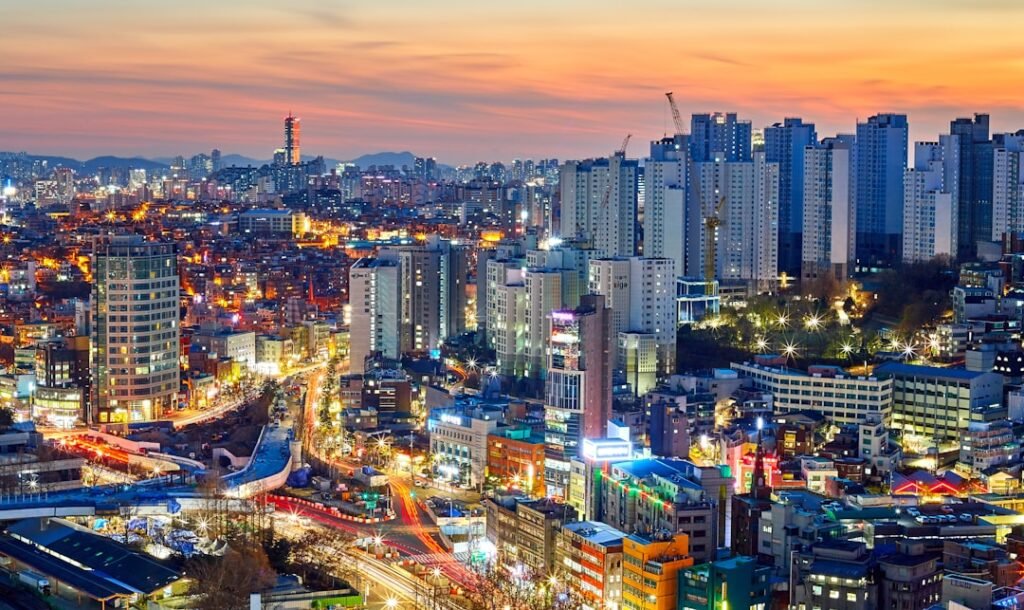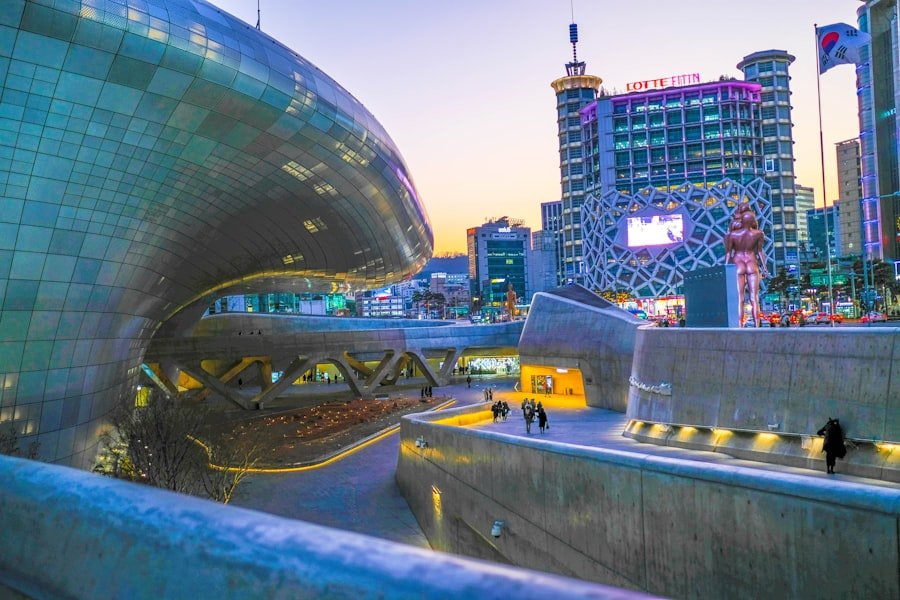

How to Wish Someone ‘Happy New Year’ in Korean (Saehae bok mani badeuseyo!)
In Korean culture, the New Year is not merely a transition from one year to the next; it is a significant occasion steeped in tradition and familial bonds. The act of exchanging New Year’s greetings is a vital part of this celebration, serving as a means to express goodwill, hope, and respect for one another. These greetings are not just casual pleasantries; they embody the essence of Korean values such as respect for elders, community spirit, and the importance of relationships.
The New Year is a time when families come together, and the exchange of greetings reinforces these connections, fostering a sense of unity and shared aspirations for the year ahead. Moreover, New Year’s greetings in Korea are often accompanied by various customs and rituals that enhance their significance. For instance, during Seollal, the Lunar New Year, it is customary for younger family members to perform a traditional bow known as “sebae” to their elders while offering their greetings.
This act not only conveys respect but also signifies the passing of blessings and good fortune from one generation to the next. Thus, the importance of New Year’s greetings transcends mere words; they are a reflection of cultural heritage and familial love that bind individuals together in a shared celebration of life and hope. Learn Korean in Oslo! NLS Norwegian Language School is now offering classes. Register today.
Table of Contents
ToggleSummary
- New Year’s greetings hold great importance in Korean culture, reflecting the value placed on respect and well-wishing for others.
- “Saehae bok mani badeuseyo” is a common phrase used to wish someone a happy new year in Korean, conveying good fortune and blessings.
- There are formal and informal ways to wish someone a happy new year in Korean, with the choice depending on the level of familiarity and respect for the recipient.
- Different ways to address someone in Korean, such as using honorifics, play a significant role in showing respect when exchanging New Year’s greetings.
- Common New Year’s greetings in Korean include “새해 복 많이 받으세요” (Saehae bok mani badeuseyo) and “새해 복 많이 받으십시오” (Saehae bok mani badeushipshio), both expressing well-wishes for the new year.
Understanding the Phrase “Saehae bok mani badeuseyo”
The phrase “Saehae bok mani badeuseyo” is perhaps the most recognised expression used during the Korean New Year. Translated literally, it means “May you receive a lot of luck in the new year.” This phrase encapsulates the essence of what New Year’s greetings are all about in Korea: wishing others prosperity, happiness, and good fortune as they embark on a new chapter in their lives. The phrase is often used in both formal and informal contexts, making it versatile and widely applicable across different social settings.
Understanding this phrase goes beyond its literal translation; it involves grasping the cultural nuances that accompany it. In Korea, the New Year is seen as an opportunity for renewal and fresh beginnings. By wishing someone “Saehae bok mani badeuseyo,” you are not only extending your best wishes but also participating in a collective hope for a better future.
This phrase serves as a reminder of the interconnectedness of individuals within the community, highlighting the importance of mutual support and encouragement as everyone navigates the challenges and opportunities that lie ahead.
Formal and Informal Ways to Wish Someone a Happy New Year

In Korea, the distinction between formal and informal language is crucial, especially when it comes to greetings. When wishing someone a Happy New Year in a formal context, such as addressing elders or superiors, it is essential to use respectful language. The phrase “Saehae bok mani badeuseyo” is appropriate in such situations, as it conveys both warmth and respect.
Additionally, one might say “새해 복 많이 받으세요” (saehae bok mani badeuseyo) with a slight bow to further emphasise respect. Conversely, in informal settings among friends or younger individuals, one might opt for a more casual approach. A simple “새해 복 많이 받아!” (saehae bok mani bada!) suffices to convey good wishes without the need for formality.
This flexibility in language reflects the dynamic nature of Korean society, where relationships dictate the level of formality required. Understanding when to use formal or informal greetings is essential for effective communication and demonstrates cultural awareness.
Different Ways to Address Someone in Korean
Addressing someone correctly in Korean is paramount to effective communication, particularly during significant occasions like the New Year. The Korean language employs various terms of address that reflect social hierarchy and relationships. For instance, when addressing an elder or someone in a position of authority, one might use titles such as “형” (hyeong) for an older brother or “누나” (nuna) for an older sister.
In more formal situations, using titles like “선생님” (seonsaengnim) for teachers or “사장님” (sajangnim) for business owners is appropriate. In contrast, when speaking with peers or younger individuals, first names or nicknames can be used without titles. This distinction not only highlights respect but also fosters a sense of familiarity among friends and family members.
During New Year’s greetings, addressing someone appropriately adds depth to your wishes and shows that you value your relationship with them. It is essential to be mindful of these nuances to ensure that your greetings are received positively.
Common New Year’s Greetings in Korean
While “Saehae bok mani badeuseyo” is undoubtedly the most common New Year’s greeting in Korea, there are several other phrases that can be used to convey similar sentiments. For instance, “새해가 밝았습니다” (saehaega balgasseumnida) translates to “The New Year has dawned,” which can be used to mark the occasion itself. Another popular expression is “올해도 잘 부탁드립니다” (olhaedo jal butakdeurimnida), meaning “I look forward to your continued support this year.” This phrase reflects the communal spirit prevalent during the New Year celebrations.
Additionally, one might hear variations that incorporate personal wishes or blessings tailored to specific individuals or families. For example, one could say “건강과 행복이 가득한 한 해 되세요” (geongang-gwa haengboge gadeukhan han hae doeseyo), which translates to “Wishing you a year filled with health and happiness.” Such personalised greetings not only enhance the warmth of your wishes but also demonstrate thoughtfulness and care towards the recipient.
Adding Well-Wishes for the New Year

Incorporating well-wishes into your New Year’s greetings can elevate your message and make it more meaningful. Beyond simply wishing someone good luck, you can express specific hopes that resonate with their personal circumstances or aspirations. For instance, if you know someone has been working hard towards a career goal, you might say “올해는 원하는 모든 것을 이루시길 바랍니다” (olhaeneun wonhaneun modeun geoseul irusigil barabnida), which means “I hope you achieve everything you desire this year.” Such tailored messages show that you care about their journey and are invested in their success.
Moreover, well-wishes can extend beyond personal achievements to encompass broader themes such as health, happiness, and prosperity. Phrases like “행복한 가정 이루세요” (haengbokan gajeong iruseyo), meaning “May you have a happy family,” can resonate deeply during this time when family bonds are celebrated. By adding these thoughtful elements to your greetings, you create a more profound connection with those around you and contribute positively to their outlook for the year ahead.
Using Honorifics in New Year’s Greetings
The use of honorifics is an integral aspect of Korean culture that permeates language and communication styles. When exchanging New Year’s greetings, employing appropriate honorifics demonstrates respect and acknowledges social hierarchies within relationships. For instance, using “님” (nim) as an honorific suffix when addressing someone elevates your greeting’s formality and shows deference.
Therefore, saying “새해 복 많이 받으세요” (saehae bok mani badeuseyo) becomes even more respectful when directed towards elders or superiors. In addition to using honorifics in greetings themselves, it is also essential to consider how you frame your wishes within the context of honouring relationships. For example, when wishing an elder relative well for the new year, you might say something like “올해도 건강하시고 행복하시길 바랍니다” (olhaedo geonganghasigo haengbokhasigil barabnida), which translates to “I wish you health and happiness this year.” This approach not only conveys your good wishes but also reinforces the cultural importance of respect within familial ties.
Pronunciation Tips for “Saehae bok mani badeuseyo”
Pronouncing Korean phrases correctly can significantly enhance your communication experience and help you connect with native speakers more effectively. The phrase “Saehae bok mani badeuseyo” can be broken down into syllables for easier pronunciation: “sae-hae bok ma-ni ba-deu-se-yo.” Each syllable should be pronounced clearly, with particular attention paid to vowel sounds that may differ from English phonetics. For instance, the ‘ae’ in “saehae” sounds similar to ‘eh’ but with a slight ‘a’ quality; practice saying it slowly at first before speeding up.
The ‘u’ in “badeuseyo” should be pronounced like ‘oo’ in ‘food,’ while ‘seyo’ has a soft ‘s’ sound followed by ‘yo,’ which should be pronounced smoothly together. Listening to native speakers or using language learning apps can provide valuable guidance on pronunciation nuances that may not be immediately apparent.
Cultural Etiquette for Exchanging New Year’s Greetings in Korean
Cultural etiquette plays a crucial role in how New Year’s greetings are exchanged in Korea. It is customary to greet family members first before extending wishes to friends or acquaintances during this festive period. When approaching elders or those in higher social positions, it is essential to bow slightly while delivering your greeting as a sign of respect.
This gesture reinforces the cultural values surrounding hierarchy and deference within Korean society. Additionally, it is considered polite to maintain eye contact while exchanging greetings; this demonstrates sincerity and engagement in the conversation. When receiving greetings from others, responding promptly with gratitude is equally important—acknowledging their wishes reinforces positive social interactions and strengthens relationships within your community.
Other New Year’s Customs and Traditions in Korea
The celebration of the New Year in Korea encompasses various customs and traditions that enrich the experience beyond mere greetings. One prominent tradition is the preparation of special foods such as tteokguk (rice cake soup), which symbolises prosperity and longevity for the coming year. Eating this dish on New Year’s Day signifies that one has aged another year and welcomes new beginnings with open arms.
Another cherished custom is the practice of wearing traditional clothing known as hanbok during Seollal celebrations. This vibrant attire not only adds colour to festivities but also serves as a reminder of cultural heritage and identity. Families often gather together to perform ancestral rites called charye, paying homage to their ancestors while expressing gratitude for past blessings—a poignant reminder of familial bonds that underpin Korean culture.
How to Respond to New Year’s Greetings in Korean
Responding appropriately to New Year’s greetings is just as important as delivering them. A simple yet heartfelt response would be “감사합니다” (gamsahamnida), meaning “Thank you.” This expression conveys appreciation for the well-wishes received and acknowledges the thoughtfulness behind them. If someone wishes you “Saehae bok mani badeuseyo,” responding with a similar phrase such as “네!
새해 복 많이 받으세요!” (ne! saehae bok mani badeuseyo!) reinforces mutual goodwill. Additionally, if you wish to reciprocate by offering your own well-wishes after receiving greetings, you could say something like “올해도 행복하세요!” (olhaedo haengbokhaseyo!), which translates to “May you be happy this year too!” This exchange fosters a sense of community spirit during the New Year celebrations and strengthens interpersonal connections among friends and family members alike.
As we delve into these rich traditions surrounding New Year’s greetings in Korea, it becomes evident that language learning plays an essential role in understanding and participating in these customs fully. For those interested in mastering Korean language skills while immersing themselves in cultural nuances, NLS Norwegian Language School in Oslo offers comprehensive Korean courses tailored for various proficiency levels. With experienced instructors guiding students through language intricacies alongside cultural insights, learners can confidently engage in meaningful exchanges during festive occasions like Seollal.
Embracing this opportunity not only enhances linguistic abilities but also deepens appreciation for Korea’s vibrant culture—making it an invaluable experience for anyone eager to connect with this beautiful heritage.
If you want to learn Norwegian, you can register for classes here. We look forward to hearing from you and helping you become fluent in Norwegian.





